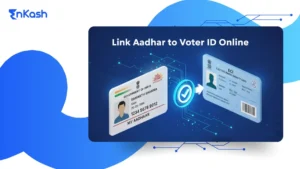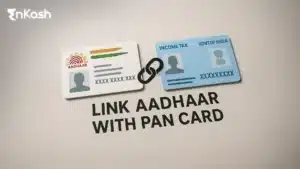Introduction
Digital payments in India have grown faster than anyone expected. You now pay suppliers, collect customer money, and even manage subscriptions online. UPI is everywhere, and card payments are standard for both personal and business use.
With this convenience comes new risks. Fraud and data theft are real problems. The Reserve Bank of India has tightened rules to keep digital payments safe, and two solutions are now central to that effort.
These are virtual card security and tokenization in payments.
A virtual card lets you create a separate digital-only card for vendor payments, staff, or subscriptions. Tokenization replaces your actual card number with a secure code so merchants never see the real details. A virtual card is like having a temporary duplicate key that you can cancel at any time. Tokenization is like fitting your main door with a secret lock that hides the real key. Different approaches, but both give you safety.
The question is not whether you need them; the question is whether you can afford them. You do. The real question is which one makes more sense for your business.
What are Virtual Cards?
A virtual card is a card number that exists only in digital form. You do not get a plastic card in your wallet. Instead, your bank or fintech app generates a card number that links to your account or credit line.
You can use a virtual card the same way you use a physical one for online payments. The difference is that you control it completely. You can set a limit, fix an expiry date, or cancel it instantly.
As a business owner, this gives you clear advantages. You can create virtual cards for different needs. One for paying suppliers. One for employee travel expenses. Another for software subscriptions. Each card is separate, so you know exactly where the money is going.
For example, if you give one employee a virtual card for travel bookings, you can cut it off the moment their trip ends. If you pay for a SaaS tool and want tighter control, you can generate a card just for that subscription.
This is why many small businesses use virtual cards. They make spending more transparent, easier to track, and safer from fraud.
Read More: A Step-by-Step Guide for Virtual Card Business
What is Tokenization in Payments?
Tokenization replaces your real card number with a fake one that only works with a specific merchant or app. Your actual card details never leave your bank. The merchant gets a token instead.
For example, you save your card on Swiggy to order food. Swiggy does not store your real card number. Instead, the system creates a unique token that represents your card but only works for Swiggy payments. If someone steals that token, they cannot use it anywhere else.
The Reserve Bank of India pushed this system hard after 2021. They wanted to stop merchants from storing actual card data on their servers. Too many data breaches were happening. Now, most major platforms use tokenization by default.
You probably use tokenization already without knowing it. When you pay on Amazon and it shows your card ending in 1234, that’s a token. When you tap to pay with Google Pay using your saved card, that’s tokenization too. The real card number stays hidden. This system works for both regular cards and UPI. UPI tokenization means your bank account details stay protected even when you link them to payment apps.
The goal is simple. Even if hackers break into a merchant’s system, they get useless tokens instead of real payment data.
Why RBI Pushed for Card Tokenization in India
The Reserve Bank of India acted after seeing rising fraud and careless storage of card data by merchants. Many websites and apps were saving customer card numbers in plain form. If those systems were hacked, millions of card details were at risk.
RBI stepped in and told merchants they could no longer keep raw card data. Instead, they had to use card tokenization. Tokens replaced the real numbers and worked only with a specific merchant or device. This move cut the chances of large-scale data leaks.
The shift was not easy. Merchants needed time to rework their payment systems. E-commerce firms and small businesses had to adjust to new standards. RBI extended deadlines more than once, but they made it clear that tokenization was non-negotiable.
For you as a business owner, the result is stronger protection. If a customer pays you through a tokenized card, their real details stay safe. If you pay a vendor, your details are also protected. This system raises the overall trust in digital payments across India.
By enforcing card tokenization in India, the RBI built a stronger base for secure transactions. That push protects you, your customers, and your vendors from the risk of card data theft.
Virtual Cards: How They Work, Pros and Cons
A virtual card works just like a normal card, but with added control. You generate it through your bank or fintech app. It comes with its card number, CVV, and expiry date. You decide how much money to load or what limit to set. You can cancel it instantly. Many virtual cards are designed for one-time use or a single merchant. Some can be used for recurring payments, but you stay in control. If something looks wrong, you can close the card on the spot without touching your main account.
For example, you need to pay for Facebook ads. Instead of using your main company card, you generate a virtual card only for that purpose. If Facebook charges more than agreed, you spot it quickly because that virtual card is linked only to ads.
Pros
- You get better control over spending
- Easier to track payments for different vendors or employees
- Strong fraud prevention since cards can be closed anytime
Cons
- Not every merchant accepts virtual cards
- Recurring payments sometimes fail if the card expires or gets canceled
- You may need to manage multiple cards if you use them often
For MSMEs, virtual cards give flexibility and control. But they also add a little extra work in managing them, especially if you rely heavily on subscription-based services.
Tokenization in Payments: How It Works, Pros and Cons
Tokenization takes your real card number and replaces it with a random code called a token. That token works only within a specific app, device, or merchant. Your actual card details never leave your bank.
For example, you add your card to Zomato or Amazon. Instead of storing your real number, the app keeps a token that represents your card. If someone hacks that merchant’s database, they only get the token. They cannot use it anywhere else.
This system is now standard in India. The Reserve Bank of India made it mandatory for merchants to stop saving raw card data. Today, when you pay through platforms like Swiggy, Amazon, or even Google Pay, you are already using tokenization.
It also works through UPI. UPI tokenization lets you connect your card and make contactless payments or online transactions while keeping your details safe. The merchant gets only the token, not your bank or card information.
Pros
- Works smoothly across apps and websites
- Safer checkout since the real card number stays hidden
- Backed by RBI rules so merchants must comply
- No need to cancel cards if a merchant faces a data breach
Cons
- You rely on the merchant’s system to use tokens correctly
- Tokens are tied to specific devices or apps, so you must re-tokenize if you switch phones or apps
- Less control compared to a virtual card, since you do not generate or cancel tokens yourself
- Tokenization improves security while keeping your payment experience simple. You do not manage multiple cards, but you give up some control to the system.
Which is More Secure, a Virtual Card or Tokenization?
Both options increase payment security, but they work best in different situations.
Virtual cards give you direct control. If you create a card for an employee or vendor, you set the limit and close it when the job is done. Even if the card details leak, the damage is limited because that card is disconnected from your main account.
Tokenization is stronger for online shopping and recurring payments. When you save your card with Amazon or Netflix, tokenization replaces your real number with a token. Even if hackers steal that token, they cannot use it elsewhere.
Use virtual cards when you want to control how money is spent. Rely on tokenization when you want smooth payments across trusted merchants without exposing your card.
Which one is more secure depends on your needs. For business expenses that require control, choose virtual cards. For personal or subscription-based payments, tokenization is safer.
How Indian MSMEs Can Use Both for Safer Payments
You do not need to pick only one method. Virtual cards and tokenization work best when you use them together. Each solves a different type of risk.
Use virtual cards for controlled spending. If you want to give employees access to funds, issue them virtual cards with set limits. If you are paying a vendor for a one-time job, use a virtual card that you can cancel once the payment is done. This prevents misuse and makes expense tracking easier.
Use tokenization for payments you make often on trusted platforms. Think of subscriptions, repeat orders, or marketplaces like Amazon and Swiggy. Tokenization hides your real card details while still allowing automatic payments to continue smoothly. By combining both, you add layers of security. Fraud prevention becomes stronger because even if one system fails, the other still protects you.
For example, an MSME can issue virtual cards for marketing spend or employee travel, but rely on tokenization for recurring expenses like cloud software or food delivery accounts linked to the office. This approach balances control with convenience.
Use virtual cards where you need control and visibility. Rely on tokenization where you need safety without extra effort.
Conclusion
You have two practical ways to keep digital payments safe in India using virtual cards and tokenization, and both solve different problems. Use virtual cards when you need control over spending by creating separate cards for employees, vendors, or projects, setting limits, and closing them when work ends, so leaks have a limited impact and tracking stays clean. Use tokenization for repeat payments on trusted platforms because apps store a token instead of your real card number, and that token works only in that app or device, so breaches do not expose your actual details. RBI’s push made tokenization standard, and virtual card security keeps improving, so combine both for stronger protection without extra effort. Start small by issuing one virtual card for a risky spend and turning on tokenization for one subscription to cut fraud risk and gain control fast.
FAQs
1. What is a virtual card?
A virtual card is a digital-only card number linked to your bank account or credit line. You use it for online payments. You set the limit and expiry. You can cancel it anytime.
2. How does a virtual card improve security?
It keeps spending separately from your main account. If the details leak, you close that card and move on. Your primary card stays safe.
3. What is tokenization in payments?
Tokenization replaces your real card number with a unique token that works only with a specific app or merchant. The real number stays hidden.
4. How does tokenization protect card data?
Merchants store tokens instead of your real card details. If someone steals the token, they cannot use it elsewhere. Your actual number remains with your bank.
5. Is tokenization safer than CVV?
Yes. CVV is a static code printed on the card. Tokenization creates a unique token tied to a device or merchant. Even if a token leaks, it is worthless outside that setup.
6. Can virtual cards replace physical cards?
Not fully. Virtual cards are great for online payments, subscriptions, and controlled employee or vendor spending. You still need a physical card for many in-person transactions.
7. Which is more secure, a virtual card or tokenization?
Both are secure. Choose based on need. Use virtual cards for control over employee and vendor spending. Use tokenization for smooth checkouts and subscriptions on trusted platforms.
8. What is the difference between UPI tokenization and card tokenization?
UPI tokenization protects bank account-linked payments in apps and contactless modes. Card tokenization protects credit and debit card payments by hiding the card number with a token.
9. When should you use a virtual card?
Use it for one-time vendor payments, marketing spends, software trials, and employee travel. Set caps and close the card when the task ends.
10. When should you rely on tokenization?
Use it for recurring payments and frequent checkouts on trusted apps. Save your card once and let the token handle future payments without exposing your real number.
11. Can you use both together?
Yes. Issue virtual cards where you want strict control and clear tracking. Rely on tokenization on platforms you use often. This layered approach reduces fraud risk.
11. What should an MSME do first?
Start small. Create one virtual card for a risky spend category. Turn on tokenization for one subscription. Review results after a month and expand from there.












